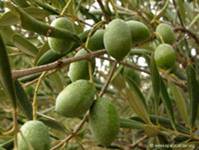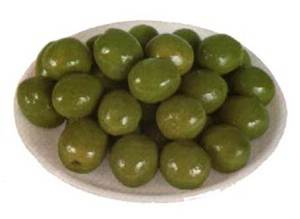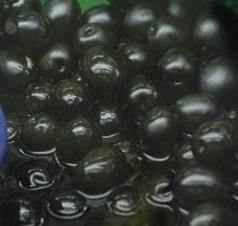 The olive tree (Olea europaea L.) is one of the most important fruit trees in the Mediterranean countries. Their products, olive oil and also table olives, are important components of the Mediterranean diet and are largely consumed in the world. Lower risks of coronary heart disease as well as certain cancers are associated with this diet.
The olive tree (Olea europaea L.) is one of the most important fruit trees in the Mediterranean countries. Their products, olive oil and also table olives, are important components of the Mediterranean diet and are largely consumed in the world. Lower risks of coronary heart disease as well as certain cancers are associated with this diet.
Table olives are well-known sources of compounds with important biological properties. These properties are related to fatty acid composition, mainly monounsaturated fatty acids, and to minor constituents, such as tocopherol and phenolic compounds . The natural antioxidants polyphenols are one of the main olive secondary metabolites, representing about 2-2.5% of the pulp.
The polyphenol content of olives depends on several factors, such as cultivar, climate, irrigation regimes ,degree of ripeness of the fruit, and elaboration process.
 The preparation of table olives follows three main trades, namely green or Spanish-style olives, black ripe or Californian style olives, and turning color and naturally black olives, butother industrial plans can be carried out.
The preparation of table olives follows three main trades, namely green or Spanish-style olives, black ripe or Californian style olives, and turning color and naturally black olives, butother industrial plans can be carried out.
The production of green table olives includes a previous treatment with lye. Afterwashing to eliminate the excess of alkali, lactic acid fermentation occurs spontaneously in brine.
 The processing method of black ripe olives includes fruit storage in brine (5-10% NaCl), during 2-6 months, with acidification to pH 4 with lactic and acetic acids and storage in anaerobic/aerobic conditions to prevent fermentation. The olives are then treated with dilute NaOH solution to debitter and are oxidized. After washing, theolives are placed in brine and ferrous gluconate or ferrous lactate to maintain their black color.
The processing method of black ripe olives includes fruit storage in brine (5-10% NaCl), during 2-6 months, with acidification to pH 4 with lactic and acetic acids and storage in anaerobic/aerobic conditions to prevent fermentation. The olives are then treated with dilute NaOH solution to debitter and are oxidized. After washing, theolives are placed in brine and ferrous gluconate or ferrous lactate to maintain their black color.
The production of natural olives in brine, usually black olives, consists of a direct brining of olives without any debittering treatment. Olives are harvestedwhen fully ripe or slightly before full ripeness. They are placedin brine and fermentation may be carried out in either anaerobic or aerobic conditions. In the anaerobic or traditional system, the natural fermentation is driven mainly by yeasts, due to the high salt concentration used.